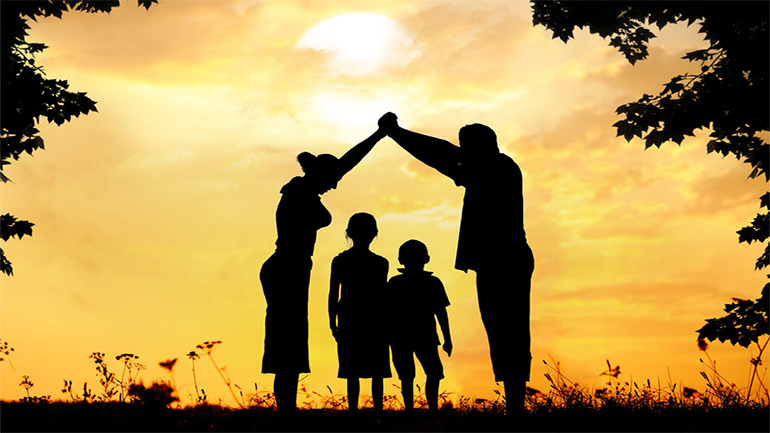
WEIJIA is a typical Chinese seven-year-old. He loves riding his bike and anything to do with cars; he is a badminton fanatic and has lessons twice a week. In a few months' time, however, he will become rather less typical. He will have a brother or sister—something most urban Chinese children lack.
魏嘉(音)是典型的中国7岁孩子。他喜欢骑自行车和一切跟汽车有关的东西;他酷爱打羽毛球,每周上两次课。但是,几个月以后,他就不那么典型了。他将有一个小弟弟或小妹妹——中国城市儿童大多都没有兄弟姐妹。
His parents are taking advantage of a relaxation in November 2013 of the country's strict family-planning rules. Couples are now allowed to have a second baby if one parent is an only child. After more than 35 years of often brutal enforcement of the one-child-per-couple policy, some had expected a mini baby-boom to follow. The National Health and Family Planning Commission estimated that the new rules would allow 11m more couples to have a second child (there were already exemptions for some). It thought that 2m of them would try in the first year. But by the end of 2014 fewer than 1.1m people had applied for the necessary permit.
2013年11月,中国放宽了独生子女政策,他的父母就利用了这项新规定。有一方是独生子女的夫妇现在获准生二孩。无情实施了35年以上的计划生育政策终于放松后,有些人以为会出现小规模的婴儿潮。国家卫生与计划生育委员会估计,新规定将使生二孩的夫妇多出1100万对。该机构认为,其中有200万对会在新规出台后的第一年这么做。但是,到2014年底,申请必要许可的人还不到110万。
That worries the government, which has tweaked the rules not out of sympathy for lonely only children or for parents who want a spare heir, but because of a population crunch. The country is ageing rapidly. In 2012 its labour pool shrank for the first time in 50 years. In the largest cities the fertility rate—meaning the number of children an average woman is likely to have during her lifetime—is among the lowest in the world, at around one. For the country as a whole it is less than 1.6—far below the level of 2.1 needed to keep the population steady.
这让政府担忧。政府调整规定并非出于同情独生子女或想再养育一个继承人的父母,而是因为人口转折点。中国正在迅速老龄化。2012年,中国的劳动力大军在50年来首次收缩。在大城市,生育率(即女性一生中可能生育的孩子数量)属于全世界最低之列,只有一个左右。就全国来说,数字不到1.6(远远低于保持人口稳定所需的2.1)。
The one-child policy did not curb Chinese fertility as much as its boosters imagine. By the time it was introduced in 1979, the fertility rate had already fallen to 2.8 from 5.8 in under a decade, thanks to usually less coercive efforts to encourage fewer births. Ruthless enforcement of the new policy resulted in widespread forced abortions and infanticide. It inflicted misery on parents who wanted larger families. But its overall impact on births was limited. In most countries, rising affluence has led to fewer babies. India’s fertility rate fell steadily over the same period without such formal policies, even though its economy did not grow nearly as fast as China’s. In wealthy South Korea the birth rate has fallen to 1.3 children per woman, down from six in 1960.
独生子女政策对中国生育率的控制并没有达到其拥护者想象的水平。1979年开始实施这项政策时,中国的生育率已经在之前的不到10年里从5.8降至2.8。实施新政策给想要多生孩子的父母带来痛苦,但这项政策对新生儿数量的影响有限。在多数国家,富裕程度的提高带来婴儿的减少。印度没有实施这类正式的政策,但生育率同期稳步下降,尽管其经济增长速度远远赶不上中国。在富裕的韩国,生育率从1960年的每名女性生育6个孩子降至1.3。
China's authorities have now changed tack, from relentlessly proclaiming the virtues of having only one child to encouraging eligible couples to “procreate legally”. But they should not be surprised that this is failing to achieve the desired effect.
中国政府现在改变策略,从大力宣扬一个孩子好变成鼓励有资格的夫妇“合法生育”。但是,他们不应对这种政策没能实现想要的效果感到意外。
Since the 1980s rural families whose first child was a girl have been allowed to try for another. More recently, couples who are both single children have been allowed to have a second. Yet the uptake has been low. Academics, including Cai Yong of the University of North Carolina, Chapel Hill, conducted a study in 2007-10 in the coastal province of Jiangsu. They found that among 2,500 urban and rural women they surveyed who were entitled to have a second child, only 6.5% did so. Ethnic minorities (nearly a tenth of the population), have long been allowed to have two or more. But on average each ethnic-minority woman bears only about 1.5 children, according to a census in 2010.
自80年代后,头胎是女孩的农村家庭可以再生育一个孩子。后来,双方都是独生子女的夫妇也获准生二孩。但是,买账的人一直不多。查珀尔希尔北卡罗来纳大学的蔡泳等学者2007年-2010年在沿海省份江苏开展了一项调查。他们发现,在他们调查的有资格生二孩的2500名城市和农村女性当中,只有6.5%的人生了二孩。少数民族一直可以生两个甚至更多孩子。但是,根据2010年开展的人口普查,平均说来,每名少数民族女性只生育1.5个孩子。
Mr Cai believes that rising incomes have been a big cause of shrinking family size. “Development is the best contraceptive,” he says. Births would have plummeted even without the one-child policy, he reckons, though not as fast or as low. Families worry about the expense of having babies: good education and health care are increasingly pricey. A study by Credit Suisse in 2013 found that couples typically spend over 22,500 yuan ($3,600) a year to raise a child to the age of 18. That is more than three-quarters of the average annual disposable income per person of urban households. A government report in 2015 said that in the first five years of a child's life, city parents spend twice as much as rural ones, even before the high cost of urban housing is included—particularly near the best schools.
蔡泳为,不断上升的收入是家庭规模减小的一大原因。他说:“发展是最好的避孕工具。”他认为,就算没有计划生育政策,新生婴儿的数量也会直线下降,尽管不像实施这项政策后那么快,或降得那么低。夫妇担心生孩子的费用:良好的教育和医疗越来越昂贵。瑞士信贷银行2013年开展的一项研究发现,一对夫妇平均一年要在孩子身上花2.25万元(3600美元),直到孩子年满18岁。2015年发布的一项政府报告称,在孩子人生中的头五年,城市父母的花费比农村父母高一倍,即使不考虑城市住房(尤其是好学校附近住房)的高额费用。
Chinese families want their offspring not only to get a good education, but also to gain an edge in the global jobs market. Hence Weijia’s parents spend nearly 15% of their annual income just on classes for him, including weekly English lessons. Over half of children under six take extra classes in addition to those at kindergarten, according to IResearch, a Chinese market-research company.
报道称,中国家庭不仅希望孩子得到良好的教育,而且希望他们在全球就业市场占据优势。因此,魏嘉的父母拿出近15%的年收入给他报班,包括每周的英语课。中国市场研究公司艾瑞咨询集团称,超过一半的六岁以下的儿童上课外班。
Grandparents help to reduce the cost of child care (they often live with their grown-up children). But since people marry and have children later than they used to, the age of live-in grandparents is rising too; fewer are sprightly enough to deal with two children. It has become so common in China to have only one child that society is no longer geared to handle multiple offspring: hotel rooms for two children cannot be booked online (parents must call); play vehicles in parks seat two adults and one youngster; toothbrush-holders in family bathrooms often have space for just three brushes.
祖父母和外祖父母帮助降低育儿费用。但由于人们结婚生育的年龄比过去晚,老人的年龄也比过去大,精力不足以应付两个孩子。一个孩子的家庭在中国已经如此普及,以至于社会的某些配置不再适合给多孩家庭提供服务:无法在网上预订针对两个孩子的酒店房间(家长必须打电话);公园的游戏车适合坐两名成人一名儿童;家庭卫生间的牙刷架常常只能放三个牙刷。
The government's next step may be to allow all couples to have two children. There is much speculation that the country's parliament will approve this next year. Family-planning bureaucrats still fret about what might happen if restrictions were to be lifted. But the same factors of cost and hassle will continue to suppress the birth rate, regardless of how fast the policy is adjusted. Growing numbers of young Chinese people now prefer not to marry or have children at all.
政府的下一步或许是允许所有夫妇生二孩。很多人猜测,中国人大将在明年批准这一政策。负责计划生育的官员仍然担心放开限制可能造成的后果。但是,无论政策做出多快的调整,费用和麻烦等因素还将继续压抑出生率。越来越多的中国人年轻人现在宁愿不结婚或者根本不生孩子。



 闽公网安备 35020302035673号
闽公网安备 35020302035673号
0 responses on "Willingness to have 2nd child remains weak in China despite relaxed policy"